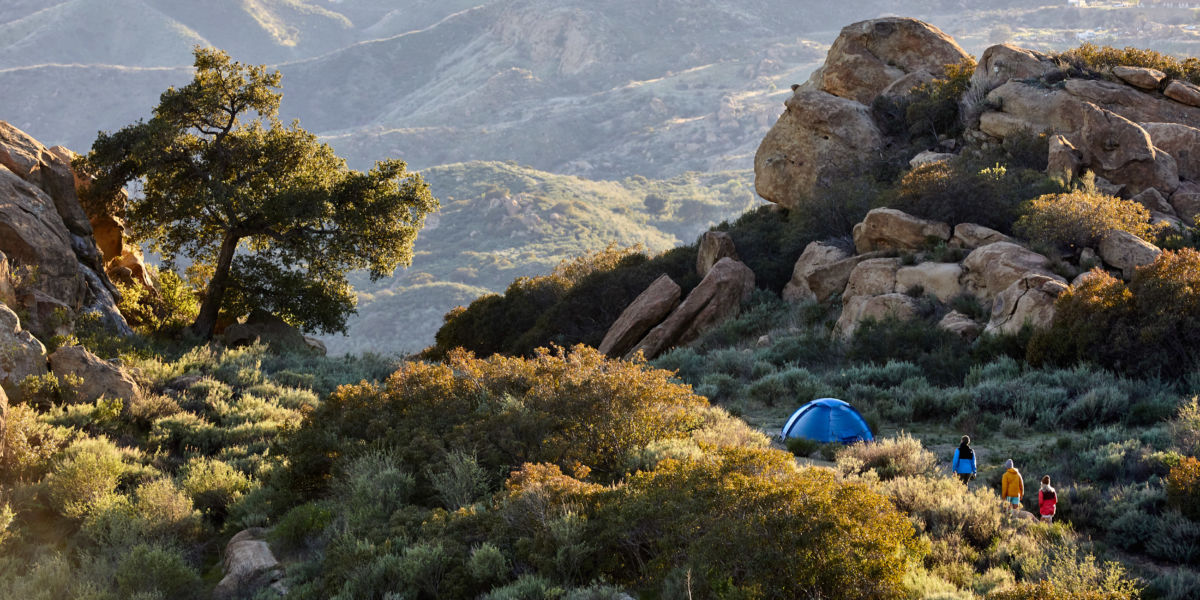
Leave Nothing but Footprints, and Other Rules to Camp By
Being responsible and respecting the environment—and others—has never been more crucial when you go camping. Here’s how to do it the right way.

Camping is a low-impact, rather than no-impact, way to travel, one of those Zen riddles in which we’re both part of the problem and part of the solution. Adhere to the following guidelines from the Leave No Trace Center for Outdoor Ethics, an organization based in Boulder, Colorado, and you can minimize impacts both on the environment and on your fellow campers.
1. Plan Ahead and Prepare
Reduce waste before you leave home by re-packing food and getting rid of wrappings and other packaging. Check in advance about site restrictions.
2. Travel and Camp on Durable Surfaces
Try to use existing fire rings and campsites when in an area without formal facilities, especially wilderness areas. Keep to official trails instead of walking through vegetation.
3. Dispose of Waste
Pack it in, pack it out is the guiding principle. Before you leave the campsite, pick up any trash or food, and leave the area cleaner than you found it.
4. Stay Clear of Water Sources
Set up camp 200 feet (about 70 paces) or more from lakes and streams to lessen the impact on water quality and local wildlife. When cleaning dishes (or yourself) use only small amounts of biodegradable soaps. Hand sanitizers also reduce water usage.
5. Leave What You Find
If you come upon a fossil, arrowhead, or beautiful rock, it’s easy to think, “Well, what’s the harm in just taking one?” But many are protected, especially in state and national parks, so leave them where they are.
